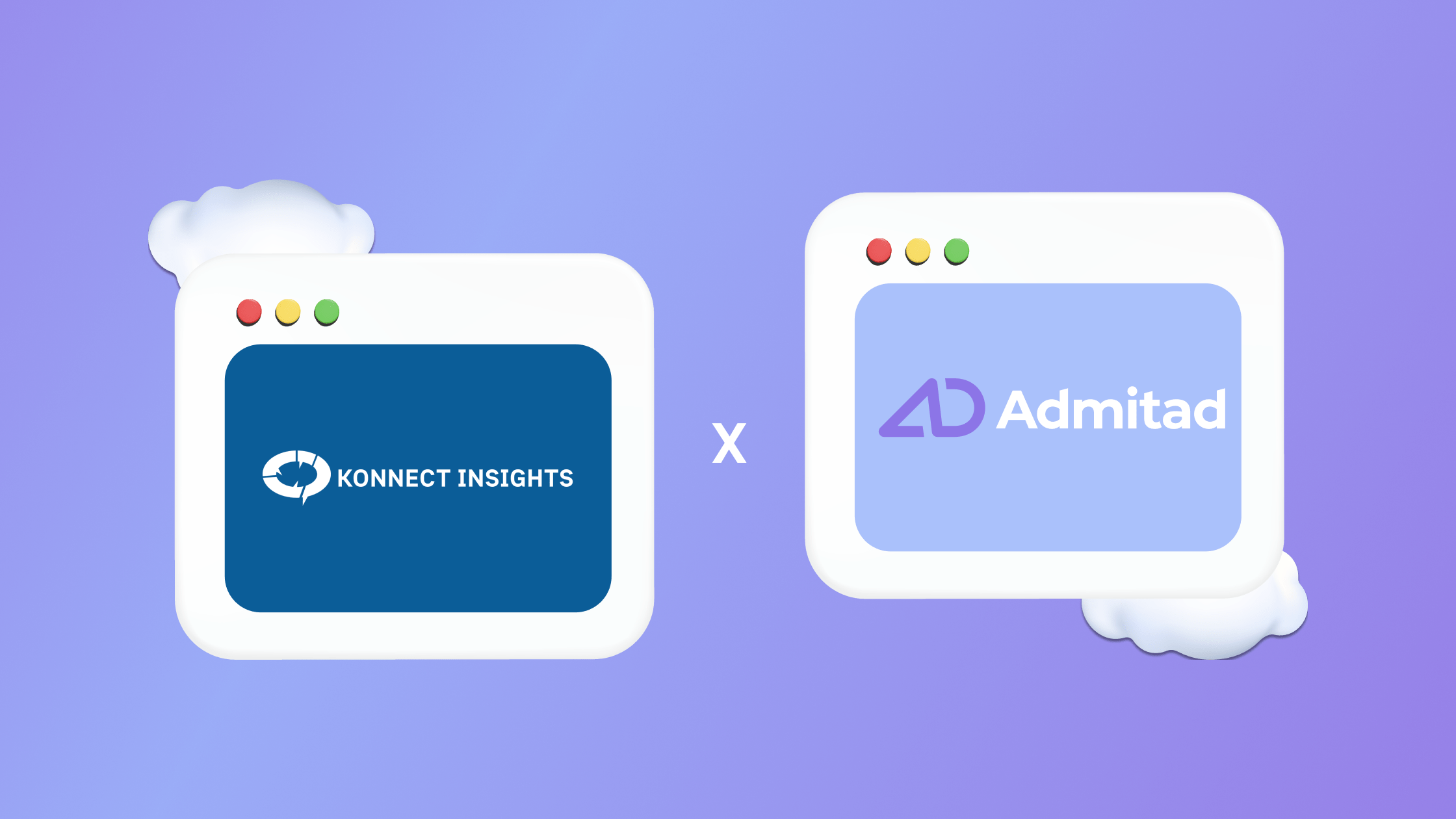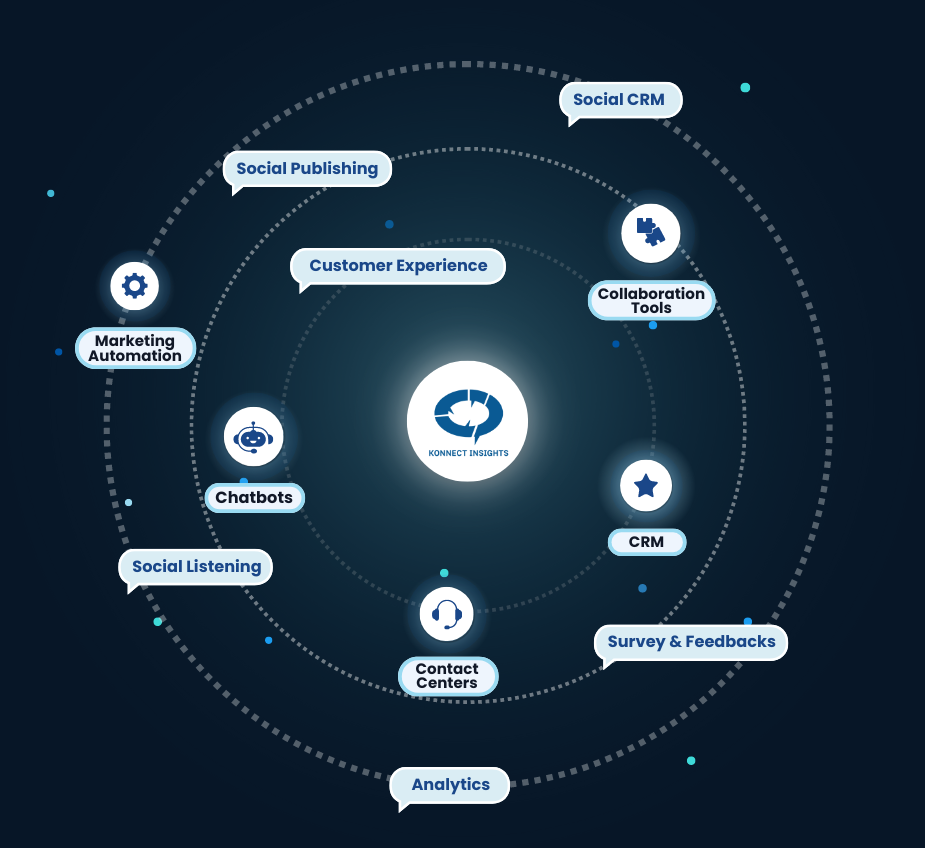Did you know that 88% of customers care as much about the experience a brand gives them as the quality of the product or service they are sold? Businesses must adapt and leverage multiple channels to engage with their customers effectively. This is where omnichannel marketing comes into play.
Omnichannel marketing focuses on creating a seamless customer experience across all touchpoints, both online and offline, allowing businesses to connect with their customers in a cohesive and personalized manner.
But how can businesses measure the success of their omnichannel marketing efforts? This is where key performance indicators (KPIs) come into play. KPIs are measurable values that help businesses track progress towards their goals.
Several crucial omnichannel KPIs can provide valuable insights into the effectiveness of a company’s strategy. In this article, we will dive deeper into these KPIs and explore how they can be used for omnichannel performance measurement marketing context.
What is Omnichannel Marketing?

Omnichannel marketing is a strategy that aims to create a seamless and consistent customer experience across all channels and touchpoints. It goes beyond multichannel marketing, which focuses on using multiple channels to interact with customers but lacks integration and consistency.
With omnichannel marketing, businesses strive to provide a unified experience that transcends individual channels, whether it’s a brick-and-mortar store, website, social media platform, or mobile app. KPIs to measure omnichannel strategy will help you determine this.
The goal of omnichannel marketing is to ensure that customers receive consistent messaging and branding throughout their journey, regardless of the channel they choose to interact with the business.
By integrating data from various touchpoints, businesses can gain deeper insights into customer behavior and preferences, enabling them to deliver more personalized experiences.
What Are Omnichannel KPIs?
Omnichannel KPIs to measure marketing are specific metrics used to measure the effectiveness of an organization’s omnichannel strategies and initiatives. These metrics help businesses evaluate their performance in terms of attracting new customers, engaging with them, converting them into paying customers and retaining their loyalty.
These KPIs are crucial for businesses looking to optimize their omnichannel marketing efforts and drive better results. By tracking these metrics, businesses can identify areas of improvement, make data-driven decisions, and align their strategies with customer expectations.
How Do Omnichannel KPIs Measure Performance?
Omnichannel KPIs measure performance by providing insights into different stages of the customer journey. They help businesses assess the effectiveness of their omnichannel strategies in terms of attracting customers, engaging with them, optimizing conversions, retaining their loyalty, and achieving a positive return on investment (ROI).
By analyzing these KPIs, businesses can identify trends and patterns in customer behavior across different channels. This allows them to understand which channels are most effective in driving awareness and engagement, as well as which channels contribute most to conversions and customer loyalty.
With this information, businesses can optimize their allocation of resources and refine their omnichannel marketing strategies to achieve better results. Now let’s explore six key omnichannel measurement methods that businesses can use to measure performance in their omnichannel marketing efforts:
1. Awareness
Awareness is a critical metric for measuring the effectiveness of your omnichannel marketing efforts. It measures the extent to which your target audience is aware of your brand and its offerings across various channels.
To track this KPI, you can analyze metrics such as website traffic, social media reach and engagement, email open rates, and search engine rankings. By monitoring these metrics over time, you can gain insights into the effectiveness of your awareness-building initiatives and identify opportunities for improvement.
For example, if you notice a significant increase in website traffic after launching a targeted social media campaign or optimizing your search engine presence, it indicates that your awareness-building efforts are paying off.
On the other hand, if your website traffic remains stagnant or declines, it may be an indication that you need to reassess your strategies and make adjustments to improve your brand’s visibility.
Another example would be if you launched a new social media campaign to promote a product launch. By tracking the number of impressions and reach generated by the campaign, you can assess its effectiveness in creating awareness among your target audience.
2. Engagement
Engagement is a crucial omnichannel metric that measures how effectively you are engaging with your audience across various touchpoints. It provides insights into the quality and depth of interactions between your brand and its customers.
To measure engagement, you can track metrics such as social media likes, comments, shares, website dwell time, and email click-through rates. These metrics help you understand how well your content resonates with your target audience and whether they are actively interacting with your brand.
For example, if you notice a high level of engagement on your social media posts or blog articles, it indicates that your content is relevant and valuable to your audience. On the other hand, if you see low engagement rates or minimal interactions, it may be a sign that you need to refine your content strategy or adjust the frequency and timing of your communications.
Another instance is if you run an email marketing campaign offering personalized recommendations based on customers’ browsing history. By monitoring the click-through rates and analyzing customer feedback through surveys or reviews, you can gauge the level of engagement and make adjustments accordingly.
3. Conversion
Conversion is a critical metric that measures the effectiveness of turning prospects into paying customers across multiple channels. It provides insights into the success of your omnichannel marketing efforts in driving desired actions from your target audience.
To measure conversion, you can track metrics such as online sales revenue, lead-to-customer conversion rate, average order value, and customer lifetime value. These metrics help you understand how well your omnichannel strategies are influencing purchasing decisions and driving revenue growth.
For example, if you notice a significant increase in online sales revenue after implementing personalized email marketing campaigns or optimizing your e-commerce website for mobile users, it indicates that your conversion optimization efforts are paying off.
Conversely, if your conversion rates remain stagnant or decline over time, it may be an indication that you need to reassess your strategies and make adjustments to improve the customer journey and increase conversions.
Or let’s say you have an e-commerce website with both online and offline sales channels. By tracking the conversion rates for each channel separately, you can evaluate the effectiveness of your omnichannel strategy in driving sales and identify any areas that need improvement.
4. Retention Rate
Retention rate is a crucial KPI that measures the ability of your omnichannel marketing efforts to retain existing customers over time. It provides insights into customer loyalty and satisfaction with your brand across different touchpoints.
To measure retention rate, you can track metrics such as customer churn rate, customer lifetime value, repeat purchase rate, and customer satisfaction scores. These omnichannel performance metrics help you understand how well your strategies are nurturing long-term relationships with your customers and encouraging repeat business.
For example, if you notice a high customer satisfaction score and a low churn rate, it indicates that your omnichannel marketing efforts are effectively building loyalty and retaining customers.
Conversely, if you see a high churn rate or low repeat purchase rates, it may be an indication that you need to reassess your strategies and make adjustments to improve the customer experience and increase loyalty.
Let’s take another instance. Let’s say you have a loyalty program that offers exclusive rewards to customers who make repeat purchases across multiple channels. By analyzing the repeat purchase rate and customer feedback, you can assess the success of your loyalty program and make necessary adjustments to improve customer retention.
5. Loyalty

Loyalty is a critical KPI that measures the level of commitment and advocacy from your existing customers across multiple channels. It provides insights into how well your omnichannel marketing efforts are fostering strong connections and brand loyalty among your target audience.
To measure loyalty, you can track metrics such as customer retention rate, net promoter score (NPS), referral rates, and social media sentiment analysis. These metrics help you understand how well your omnichannel strategies are generating positive word-of-mouth, driving brand advocacy, and attracting new customers through referrals.
For example, if you notice a high NPS score or an increase in referral rates after implementing a personalized loyalty program or launching a user-generated content campaign on social media, it indicates that your omnichannel marketing efforts are effectively fostering loyalty and advocacy.
However, if you see a decline in NPS scores or minimal engagement in referral programs, it may be an indication that you need to reassess your strategies and make adjustments to strengthen loyalty-building initiatives.
This other example is sure to clear your skepticism. For instance, suppose you have a mobile app that allows customers to earn points for every purchase they make across different channels. By tracking the number of app downloads, active users, and redemption rates of loyalty points, you can evaluate how effective your mobile app is in fostering loyalty among your customers.
6. Return on Omnichannel Investment
Return on omnichannel investment (ROI) is a crucial KPI that measures the overall effectiveness and profitability of your omnichannel marketing efforts. It provides insights into the financial impact of your strategies and tactics across different touchpoints.
To measure ROI, you can track metrics such as customer acquisition cost (CAC), customer lifetime value (CLTV), revenue attribution, and return on ad spend (ROAS). These metrics help you understand how well your omnichannel marketing initiatives are driving revenue growth and whether they are delivering a positive return on investment.
For example, if you notice a high CLTV and a low CAC after implementing personalized email marketing campaigns or leveraging data-driven retargeting strategies, it indicates that your omnichannel marketing efforts are generating profitable customer relationships.
Conversely, if your CAC outweighs the CLTV or if your ROAS is negative, it may be an indication that you need to reassess your strategies and make adjustments to improve profitability.
Another example: suppose you invest in a social media advertising campaign to drive traffic to your website and increase sales. By calculating the revenue generated from social media referrals and comparing it with the cost of the campaign, you can determine the ROI of your social media marketing efforts.
Conclusion
In conclusion, measuring performance in omnichannel marketing requires businesses to track key performance indicators (KPIs) that provide valuable insights into various stages of the customer journey.
By analyzing awareness, engagement, conversion, retention rate, loyalty, and return on omnichannel investment, businesses can assess the effectiveness of their strategies and make data-driven decisions to optimize their omnichannel marketing efforts.
These KPIs help businesses understand where they excel and where improvements are needed, enabling them to deliver seamless customer experiences across all channels and drive better results.
If you are sold and want to get started on your omnichannel tracking, get in touch with Konnect Insights to learn more!






























